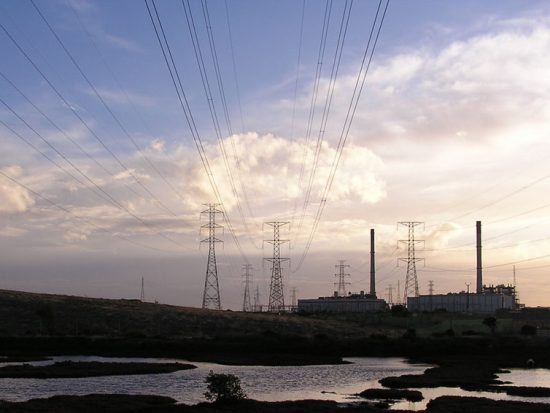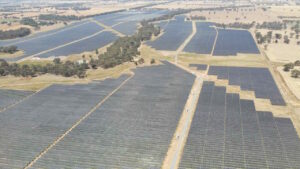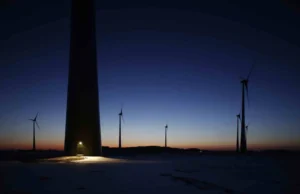 It didn’t take long after the failure of South Australia’s two biggest gas plants late on Friday afternoon for the abuse to start flowing.
It didn’t take long after the failure of South Australia’s two biggest gas plants late on Friday afternoon for the abuse to start flowing.
“Renewables, absolute frigging BS,” wrote one correspondent in an email to RenewEconomy within a few hours of the sudden loss of 600MW of gas-fired generation. “What a lot of crap this renewable story is.”
It happens all the time.
+ When a storm knocks down three power lines in September, the immediate reaction is to blame renewables;
+ when a condenser in Victoria hits the ground and takes out the main inter-connector, forcing rolling stoppages in South Australia, the immediate reaction is to blame renewables;
+ when more storms take down power lines after Christmas, causing more outages in South Australia, the blame is put on wind and solar;
+ and when the market operators turn out to be the only people in South Australia unaware of a pending heat wave, forcing them to miscalculate a demand surge and impose rolling stoppages, it was once again the fault of renewable energy.
Friday’s events, however, took this blame game to a new level. Some sort of explosion occurred at the Torrens Island gas plant, starting fires and causing three units (totalling 400MW) to suddenly trip off and lose power, and causing the Pelican Point gas generator (210MW) to do the same.
In response, the market operator asked some other gas generators to fire up, and it and the government asked consumers to reduce their power load where they could, particularly with air conditioning.
The very same approach had been taken by the NSW government with their coal-fired grid a few weeks earlier when two units at one of the state’s biggest coal generators packed up and the two biggest gas generators either tripped or failed to start when needed.
And, as occurred in NSW, solar and wind played a critical role in keeping the power on. Energy minister Tom Koutsantonis said that if it wasn’t for wind and solar then the lights would have gone out on Friday. Indeed, rooftop solar PV was providing 13.5 per cent of the state’s electricity demand when the gas plants tripped.
Apparently, though, it’s all the fault of renewables, a conclusion drawn from the same twisted logic that supports the gun lobby in the US. As Don Russell wrote in The Monthly, guns killed 301,797 people in the US between 2005, and 2015 (and terrorists killed 95), but it wasn’t guns but restrictions on guns that was cited as being the fourth greatest fear in the US.
And the most worrying part of this reaction is that it is not just the province of the unhinged and uninformed individual. Were this the response of an isolated few, it could be safely ignored. But it hasn’t been, and many people are under the same myths and misapprehensions.
Indeed, the campaign against renewables has been led by the federal government, from prime minister Malcolm Turnbull all the way down, and reached new levels of stupidity on the weekend when the Coalition repeated its desire to build a new coal-fired power station in Queensland because, wait for it, the current coal-fired power station was not cheap enough.
More on that below.
According to the correspondent who told us that the gas plant explosions were the fault of renewables, the next best example of the “uselessness” of wind energy is King Island, where he said wind power was only providing one-third of the island’s energy needs, and diesel was providing the rest. “I wonder if the plebs on King Island understand what this infrastructure actually does for them?” he wrote.
Well, they probably do. Until a few years ago, King Island relied just about exclusively on diesel for its power needs. Not only is it dirty, it is horrendously expensive.
So Hydro Tasmania, in a landmark trial, decided to spend $18 million adding wind power, a bit of solar, battery storage and some smart software to see if it can reduce the amount of diesel being burned.
It has been a stunning success. On occasions, the island burns no diesel, and the savings so far on its diesel bill have totalled $30 million in just four years, far more than the original investment. And the wind turbines will be spinning and generating power for no fuel cost for another couple of decades, too.
Such ignorance in the general community might be expected. Anyone who relies on their information from News Ltd, or the One Nation policy platform, might be excused for not getting the whole picture.
But Australians should be entitled to expect more from their resources minister. Matt Canavan, according to media reports, responded to the decision by Rio Tinto’s Boyne Island smelter to cut production and jobs at the facility by repeating his call for a new coal-fired power station in north Queensland.
This idea is beyond stupid. Boyne Island already gets 85 per cent of its power from the nearby Gladstone coal generator at subsidised prices, and its owner, Rio Tinto, also owns 42 per cent of the coal generator!
So why couldn’t Rio Tinto negotiate a contract for the remaining 15 per cent of its power needs from the Gladstone generator it partly owns or any other coal generator at reasonable rates? Probable answer: Because that remaining capacity is critically important to play the market and ensure the high wholesale market prices.
Indeed, the spot wholesale price of electricity has averaged more than $200/MWh in Queensland this year. The state’s future prices for 2018 is around $110-120/MWh. That’s more than the cost of a new solar plant.
So, perhaps it could take a leaf out of another major power user in Queensland, the Sun Metals zinc refinery near Townsville, which has also been struggling to deal with high power prices in the huge coal dependent state.
Sun Metals has taken matters into its own hands. Not only has it led the push for a change in market rules to try dilute the power of the fossil fuel generators, whose dominance of the market allows them to set high prices without censure, it has also decided to build its own solar farm.
That project, now a 116MW facility, will provide not only cheaper power than Sun Metals can source from the coal-fired grid, it will lock in costs for at least 20 years. That will give the company the certainty to upgrade and expand its refining operations. Don’t expect to read about this in mainstream media though.
Canavan, meanwhile, continues to push his crazy idea of adding new coal. “We would not be building a new coal-fired power station because we like looking at smoke stacks on the horizon, but I do find power stations inspiring,” he told The Australian newspaper, before confirming that taxpayer funds could be used for such a project.
As the CEFC chief executive Oliver Yates has made abundantly clear, it would not just require taxpayer subsidies and finance to build a coal-fired power station, but billions of dollars in indemnities and guarantees on the off-chance that an Australian government might one day get serious about climate change and impose a carbon price and/or a meaningful emissions reduction target.











